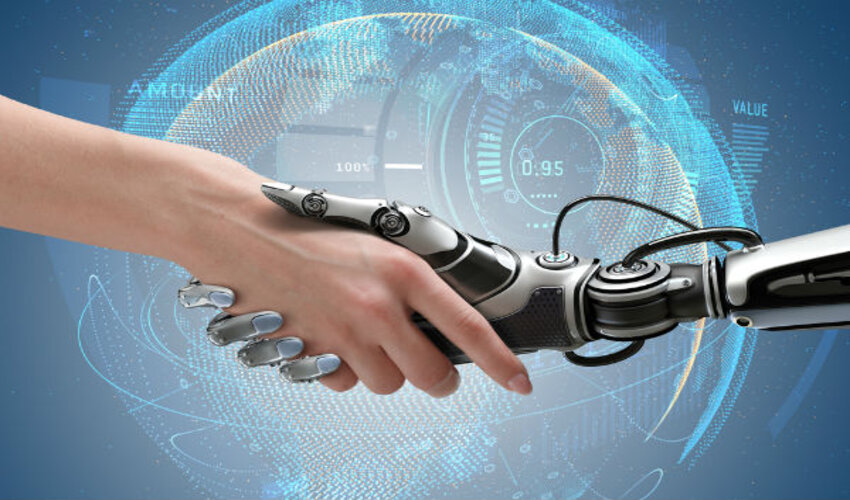
The tech industry is constantly evolving with innovations and breakthroughs that go on to transform businesses and even entire industries. As we enter 2023, several key technology trends are poised to disrupt diverse sectors in significant ways. Here are 10 major tech trends that are likely to shape various industries this year:
AI and Machine Learning
Artificial intelligence (AI) and machine learning will continue their rapid advancement in 2023. From predictive analytics to computer vision, these technologies are enabling businesses across industries to automate processes, gain insights from data, and enhance customer experiences.
For instance, AI is allowing financial services firms to detect fraud, make loan decisions, and provide robo-advisory services. In healthcare, machine learning aids in clinical diagnosis and treatment recommendations. AI will increasingly impact sectors like manufacturing, retail, transportation, and more.
Extended Reality
Extended reality (XR) refers to immersive technologies like augmented reality (AR), virtual reality (VR), and mixed reality. The XR market is forecast to grow from $27 billion in 2022 to over $414 billion by 2028. Industries from healthcare to manufacturing are implementing XR for training, digital twins of assets, and engaging customer experiences.
For example, AR allows factory workers to view holographic schematics to guide repairs. VR puts medical students in simulated surgical environments. The utility of XR will drive rapid business adoption in 2023.
5G and Advanced Connectivity
The rollout of 5G networks is enabling new mobile capabilities like ultra-low latency, enhanced broadband, and massive device connectivity. These 5G attributes are powering innovations in sectors like manufacturing, energy, transportation, and more. For instance, utilities can leverage 5G to build smart power grids. Automakers use 5G for connected vehicles. Manufacturers implement 5G for real-time supply chain coordination. 2023 will see more industries tap 5G’s speed and reliability.
Advanced Robotics and Automation
Sophisticated robotics and automation will disrupt various industry operations and workflows in 2023. AI-enabled robotics can handle dangerous work, work tirelessly without breaks, and take over repetitive manual tasks. Robots are already deployed across factory floors for assembly and quality inspection. In warehouses, robotics improve logistics by locating, picking, and packing orders faster. Service sectors are adopting robots too – like using them to deliver room service in hotels. The scope of robotics will dramatically widen.
Digital Twins
A digital twin is a virtual representation of a real-world asset or process that uses data to mirror its near real-time status. Digital twins enable companies to optimize performance through virtual testing. For example, an automaker can simulate how a new car design performs under different conditions. Or an energy firm can use a wind turbine digital twin to spot maintenance issues before turbine failures. Digital twins will become more prevalent across industries like manufacturing, healthcare, smart cities, and energy in 2023.
Edge Computing
Edge computing refers to decentralized data processing power located at the ‘edge’ of networks, near data sources and closer to users. This architecture reduces latency while supporting real-time applications. For instance, an offshore oil rig can analyze seismic data on-site. A factory can monitor production line sensors and make rapid adjustments. Edge computing will see increased adoption in 2023 – especially for use cases needing quick data insights in the manufacturing, energy, and transportation sectors.
Cybersecurity Mesh
As industries digitize operations, cyber threats are growing in frequency and impact. Cybersecurity mesh allows businesses to implement integrated security across entire ecosystems. Key enablers like AI-powered threat detection, blockchain-based data provenance, and micro-segmentation strategies will gain prominence.
Cybersecurity mesh platforms help manufacturing plants secure entire production facilities. For healthcare systems, the approach protects hospitals, clinics, and patient health devices. Robust cybersecurity will be crucial for industries handling sensitive data.
Sustainability Through Technology
Technology is enabling industries to achieve sustainability goals related to energy efficiency, waste reduction, and responsible operations. For example, supply chain companies implement blockchain to track ethical sourcing. Smart building systems cut energy consumption.
AI optimizes transportation fleet routes to reduce mileage. FanDuel Online Casino uses virtual reality to create an engaging customer experience without relying on physical casino construction. Technology support for ESG initiatives will accelerate in 2023.
Advanced Materials
Engineered advanced materials are transforming product design and manufacturing across industries. Materials built at the molecular level provide novel mechanical, electrical, and thermal properties. For instance, carbon fiber composites enable lighter-weight transportation equipment. Shape memory alloys improve robotic motion and control.
Energy and electronics sectors utilize nanomaterials for better battery storage and circuitry. The materials science innovations emerging from labs will find growing real-world applications.
The SN74AHCT1G00-Q1 integrated circuit, made with advanced materials, is shaping various industries by combining electronic components on a single chip efficiently.
Biotechnology Breakthroughs
Biotechnology advances are disrupting pharmaceuticals with personalized medicine, enabling sustainable materials from bio-based sources, and helping to secure the food supply via enhanced crops. 3D bioprinting of organs could transform healthcare.
Biofuels and biochemicals reduce reliance on oil and gas. Gene editing can lead to more resilient agricultural products. As biotech research translates into practical implementations, it will revolutionize diverse industries in 2023 and beyond.
Conclusion
The pace of emerging technology development shows no signs of slowing down in 2023. As AI, 5G, XR, advanced materials, biotech, and other innovations continue to progress, they will bring about profound changes across diverse industries.
Companies that want to remain competitive need to keep a pulse on these key trends and be proactive in leveraging them. While adopting new technologies presents challenges, those who embrace change and digital transformation will be best positioned to capitalize on the opportunities.
With technology playing an increasingly crucial role, businesses must stay future-focused, adapt quickly, and use tech to drive positive disruption. The tech trends rising to prominence in 2023 will shape business strategies and operations for years to come across sectors. By understanding the transformations underway, companies can harness the technological revolution to their advantage.

Aimee Garcia is a Marketing Consultant and Technical Writer at DailyTechTime. She has 5+ years of experience in Digital Marketing. She has worked with different IT companies.

